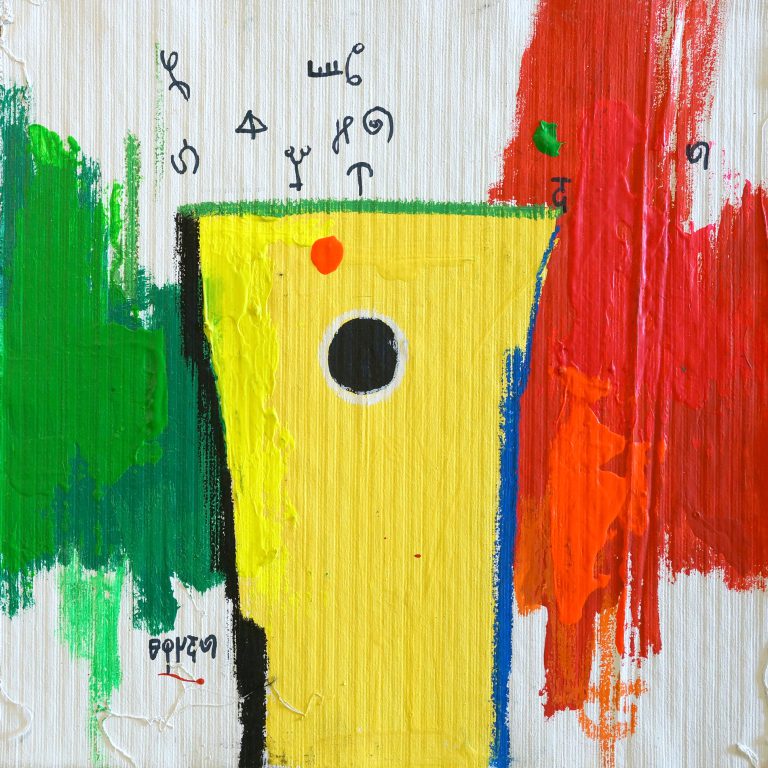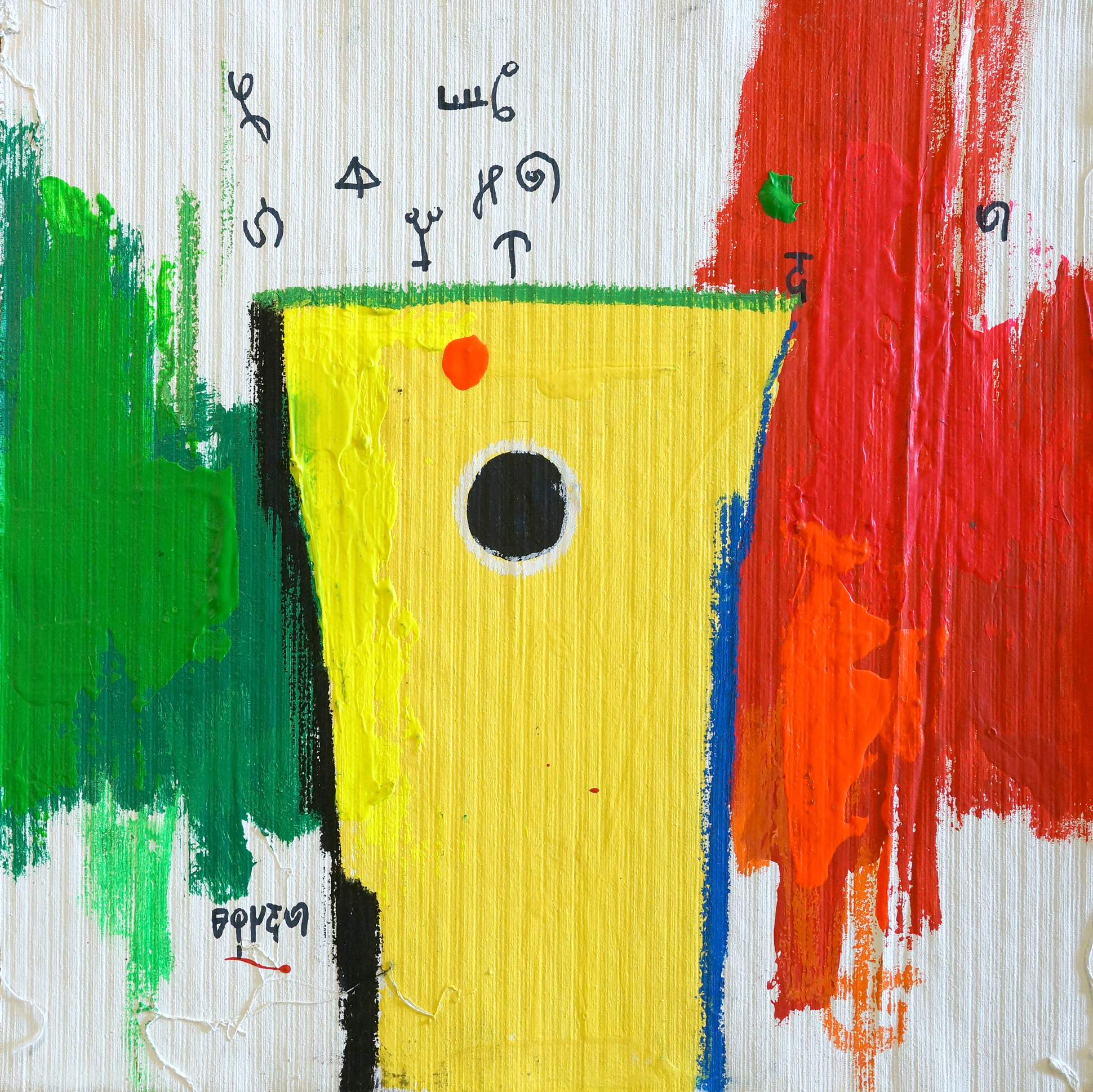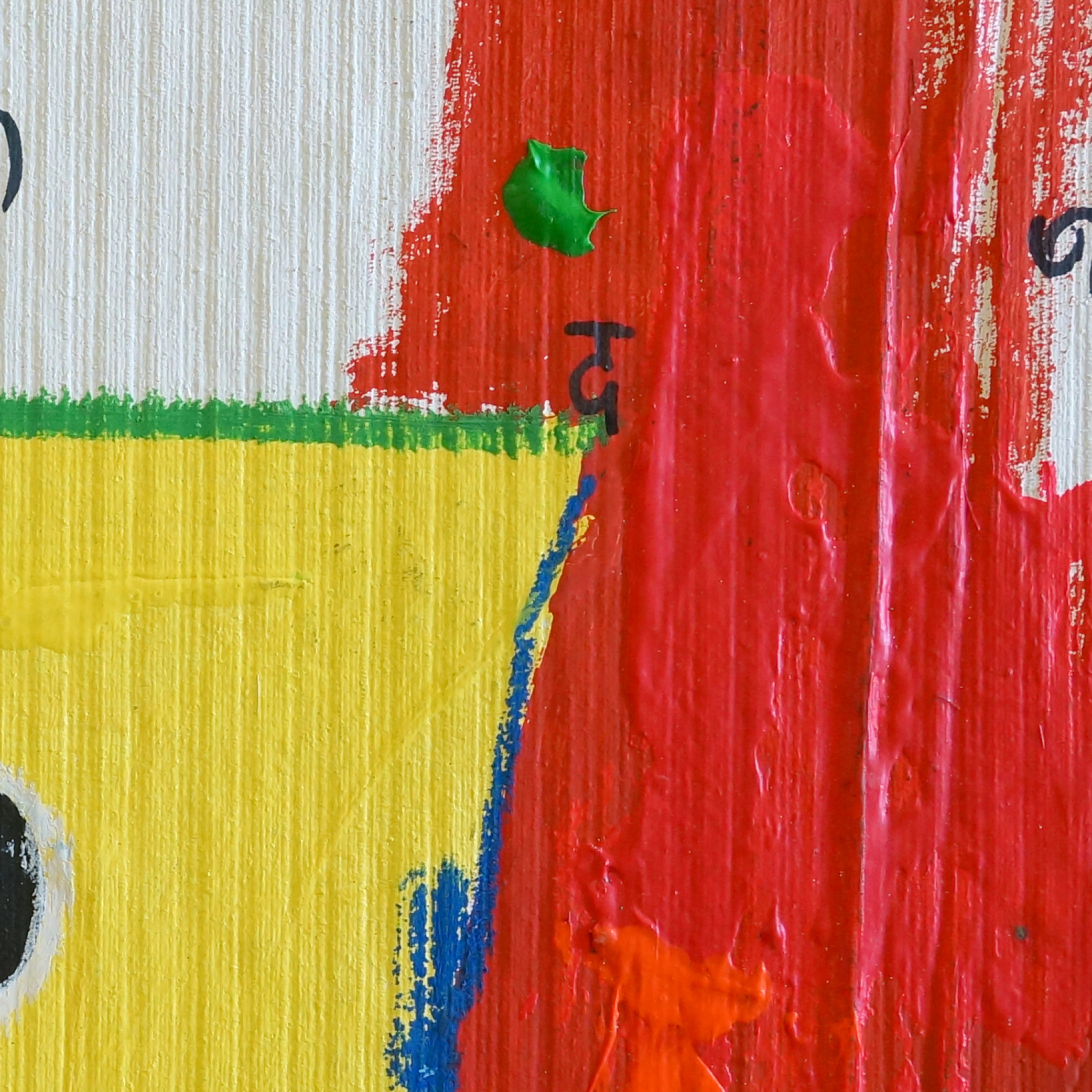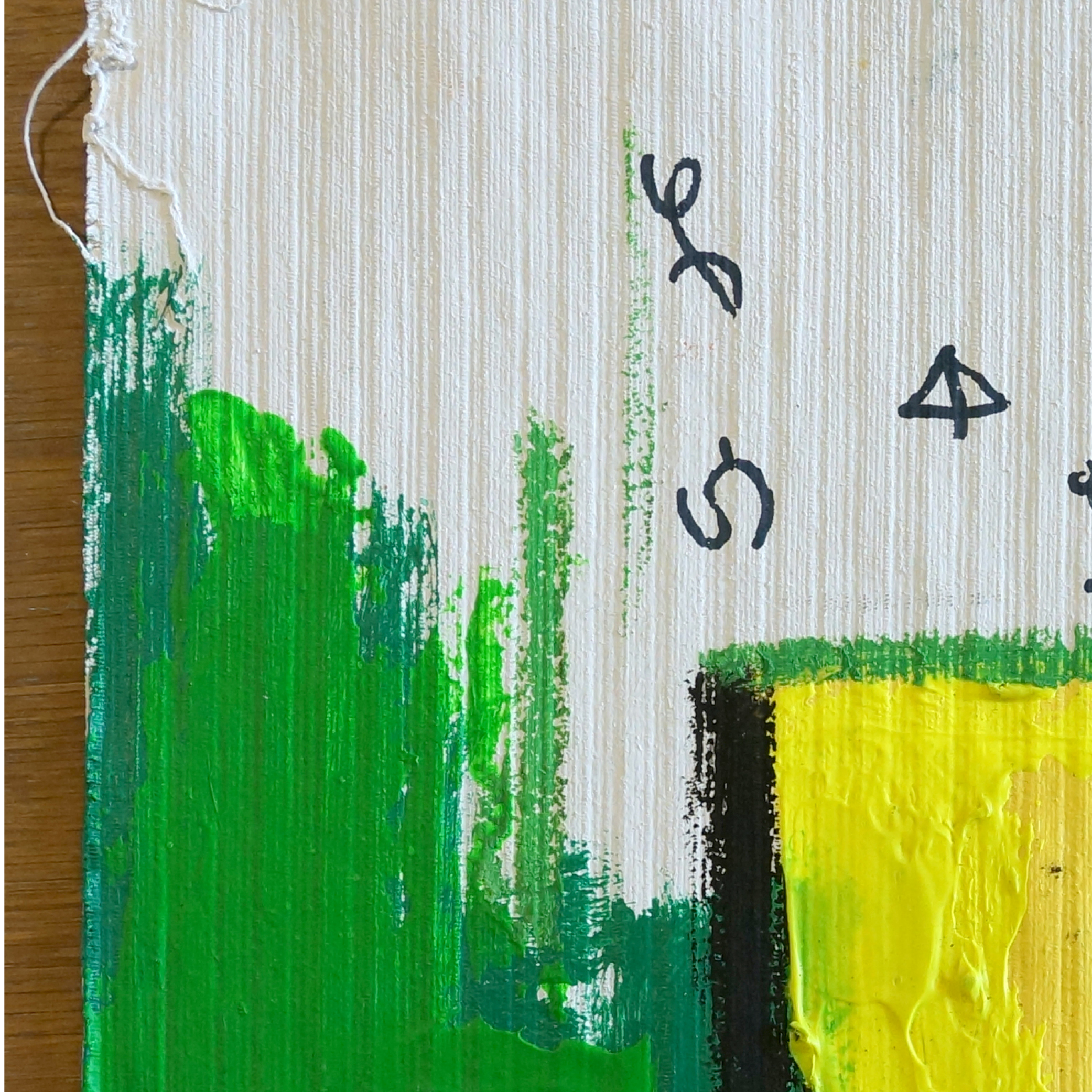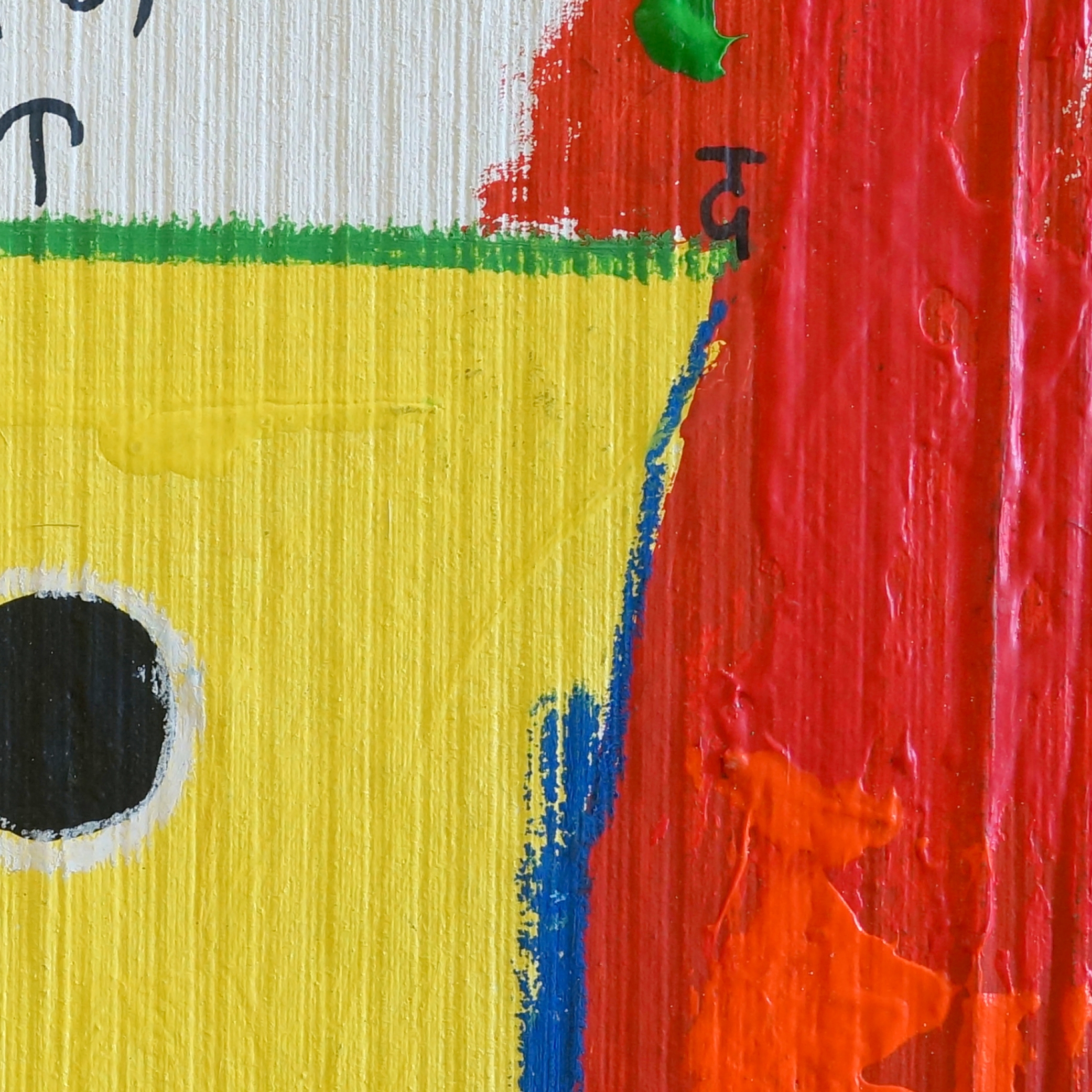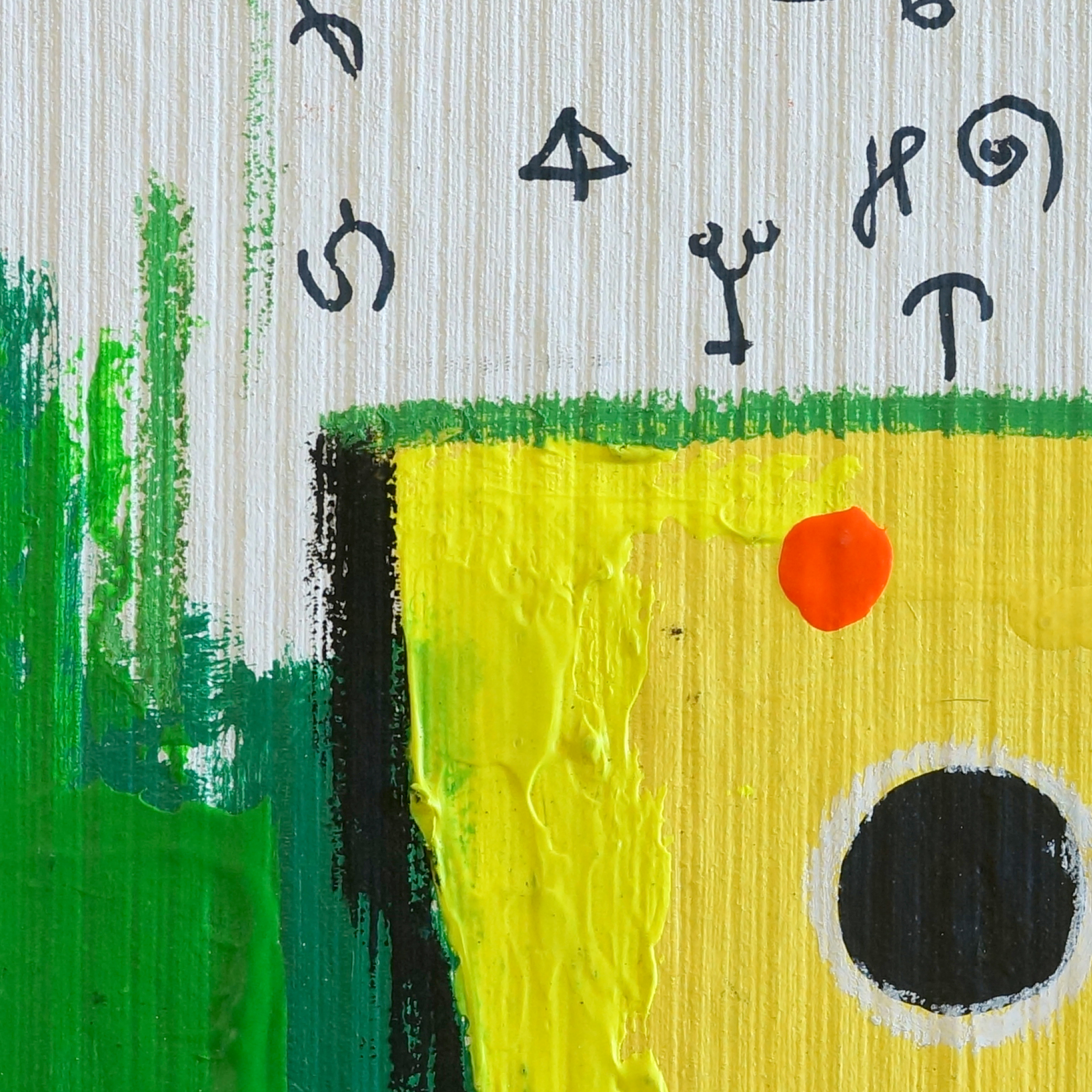Marcel Pinas
No Title (3)
2020
paintings
size 41 x 38 cm
Bright colors, small but beautiful.
€ 950,00
The bright colors stand out first. They refer to the colorful decorations that the Maroons put on, in and around their houses. These, in turn, are a reflection of the colors of the richly variegated nature. Since the colors are darker in some periods than in others, especially his canvases from before 2000 are rather gloomy, it is likely that the mood in which the canvases are made also plays a role. His recent paintings have an almost elated appearance.
Marcel Pinas
While the sixteen-year-old Marcel Pinas (1971) was producing his drawings and watercolours at the Nola Hatterman Institute in Paramaribo, a bloody civil war was raging in his birthplace, the north-eastern district of Marowijne, between the forces of army leader Desi Bouterse and the guerrillas of his former bodyguard, Ronnie Brunswijk. Two realities existing side-by-side.
Five years later, in 1997, Marcel Pinas was a locally successful artist. His drawings and watercolours, often with indigenous themes, were popular. They came to him easily. The government gave him, together with Robert Enfield, George Struikelblok and Humphrey Tawjoeram, a scholarship to continue his studies at the Edna Manley College of Visual and Performing Arts on Jamaica. Here he was brought down to earth with a bang. It was now made very clear to him that if he was not prepared to deviate from his successful, but traditionally paved path, he may as well go straight back to Suriname. For the first time he was forced to reflect on what he wanted to say and express and to make his ‘modus operandi’ subservient to this. The one reality was being forced to look the other in the eye.

